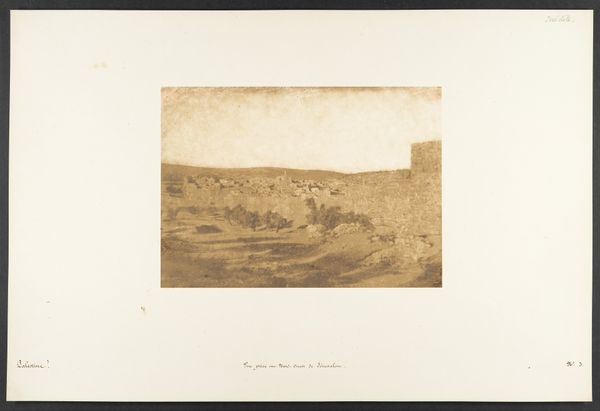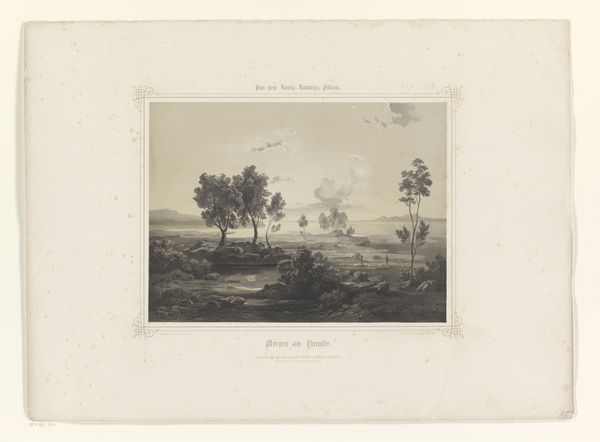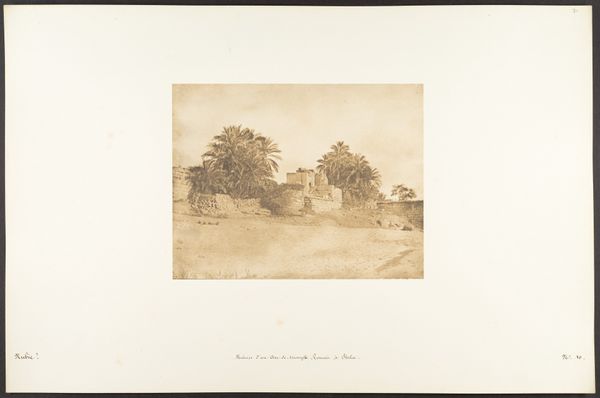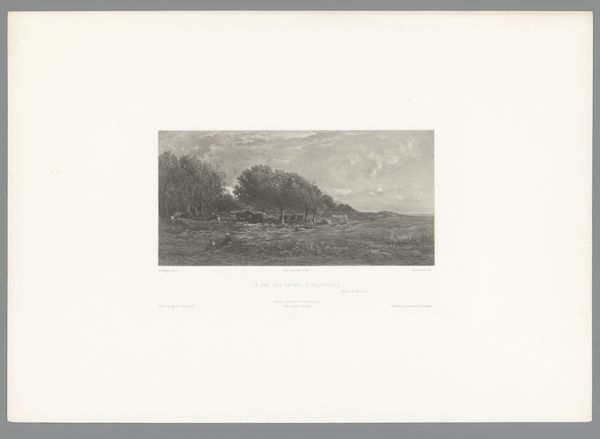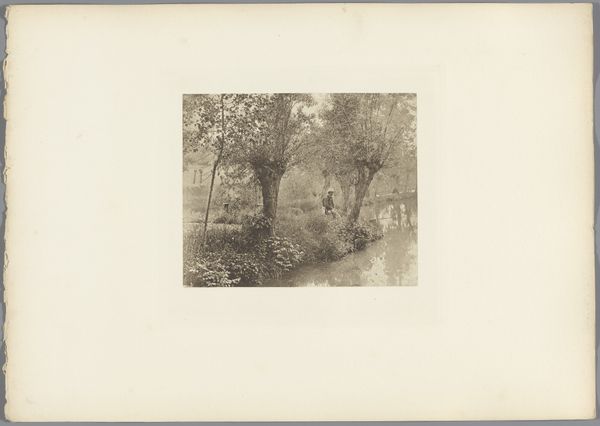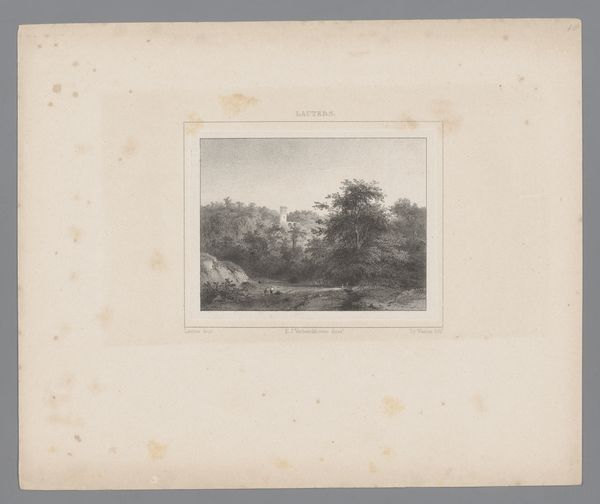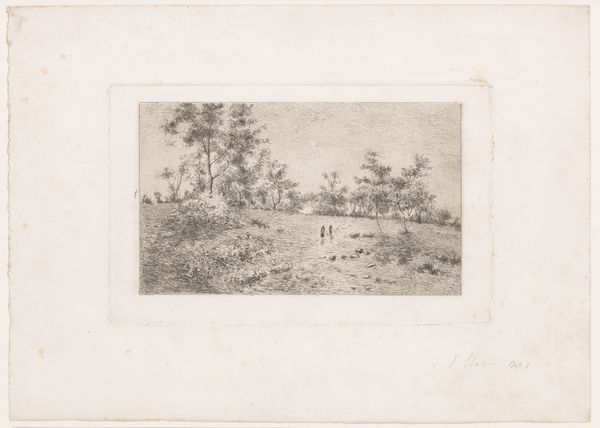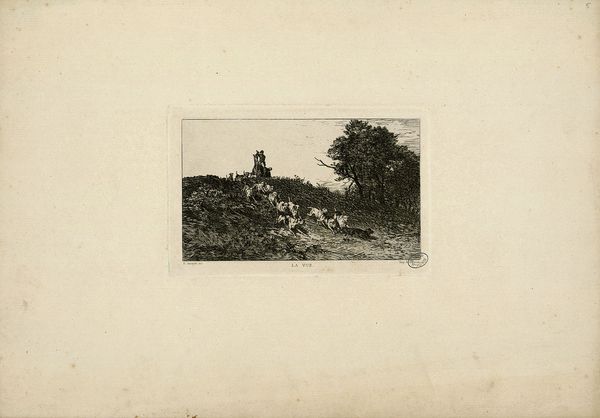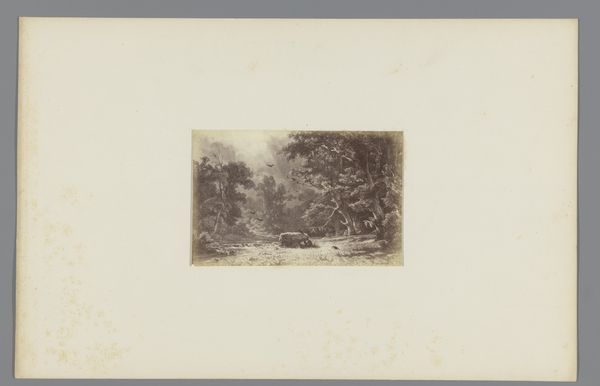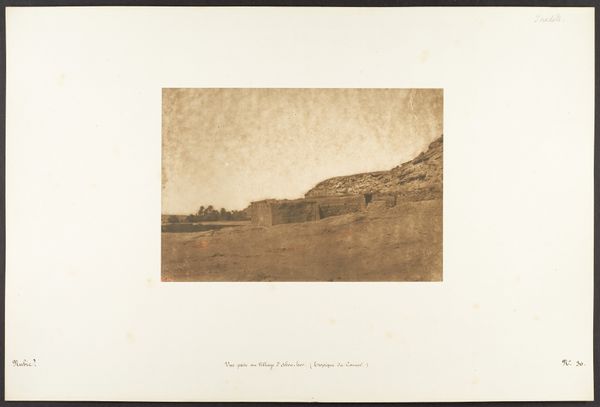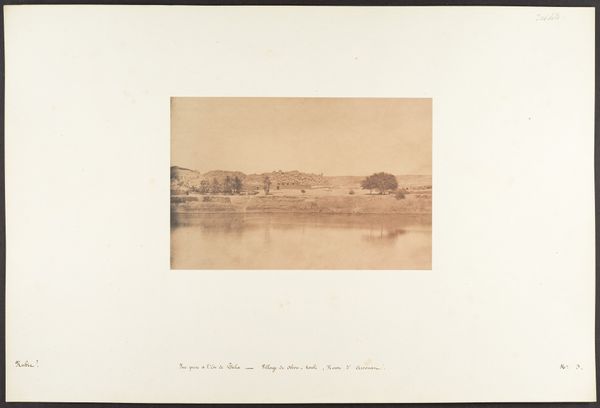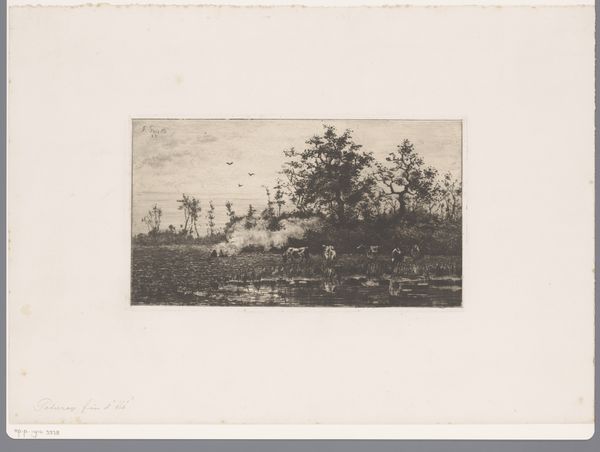
photography
#
landscape
#
photography
#
orientalism
Dimensions: height 208 mm, width 269 mm, height 368 mm, width 394 mm
Copyright: Rijks Museum: Open Domain
Editor: This photograph, titled "The Fitzgerald bridge, Bund Gardens and River (...), Poona, India" from around 1875-1900, really evokes a sense of stillness, doesn't it? The composition is almost entirely soft, rounded shapes and diffused light. What strikes you most about its formal qualities? Curator: Formally, one notices the stark contrast created by the dark oval framing, sharply delineating the soft, almost dreamlike, vista of the gardens. Consider the tonality – a restricted palette that emphasizes texture over vibrant color. Editor: Yes, the limited palette certainly directs the eye. The shapes within the oval are very repetitive; it’s rows of circular trees and shrubs following the oval curve, all rounded off and nestled within one another. I feel this creates a nice feeling of enclosure. Curator: Precisely. And within this enclosure, consider how the artist directs your gaze with line and form. The path leads you centrally, towards a vanishing point only just suggested by the structure nestled within the vegetation, disrupting the even arrangement you noted. What do you think that disruption brings to the image as a whole? Editor: It stops the composition from feeling static, adding a destination point for your eye. Do you feel like the photograph being oriented this way makes it balanced and structured? Curator: I agree; that interruption of this carefully arranged organic geometry does a service to the overall structure of the image. In balancing opposing effects, it lends the work complexity beyond the purely representational. I think the composition also subtly contributes to an evocation of place. The effect of light and shade feels quite particular and the artist must have carefully noted those down. It is hard to describe how this comes across without a color palette. Editor: That's interesting. So, through your formal analysis, we are encouraged to focus on the use of lines, shapes, and tonal arrangement and its affect. I'll definitely be looking more closely at photographic composition from now on! Curator: Exactly, close inspection of these individual compositional and pictorial elements allows a reading of any given artwork outside the restrictions of its contextual considerations. An enjoyable process, I hope you’ll agree.
Comments
No comments
Be the first to comment and join the conversation on the ultimate creative platform.

